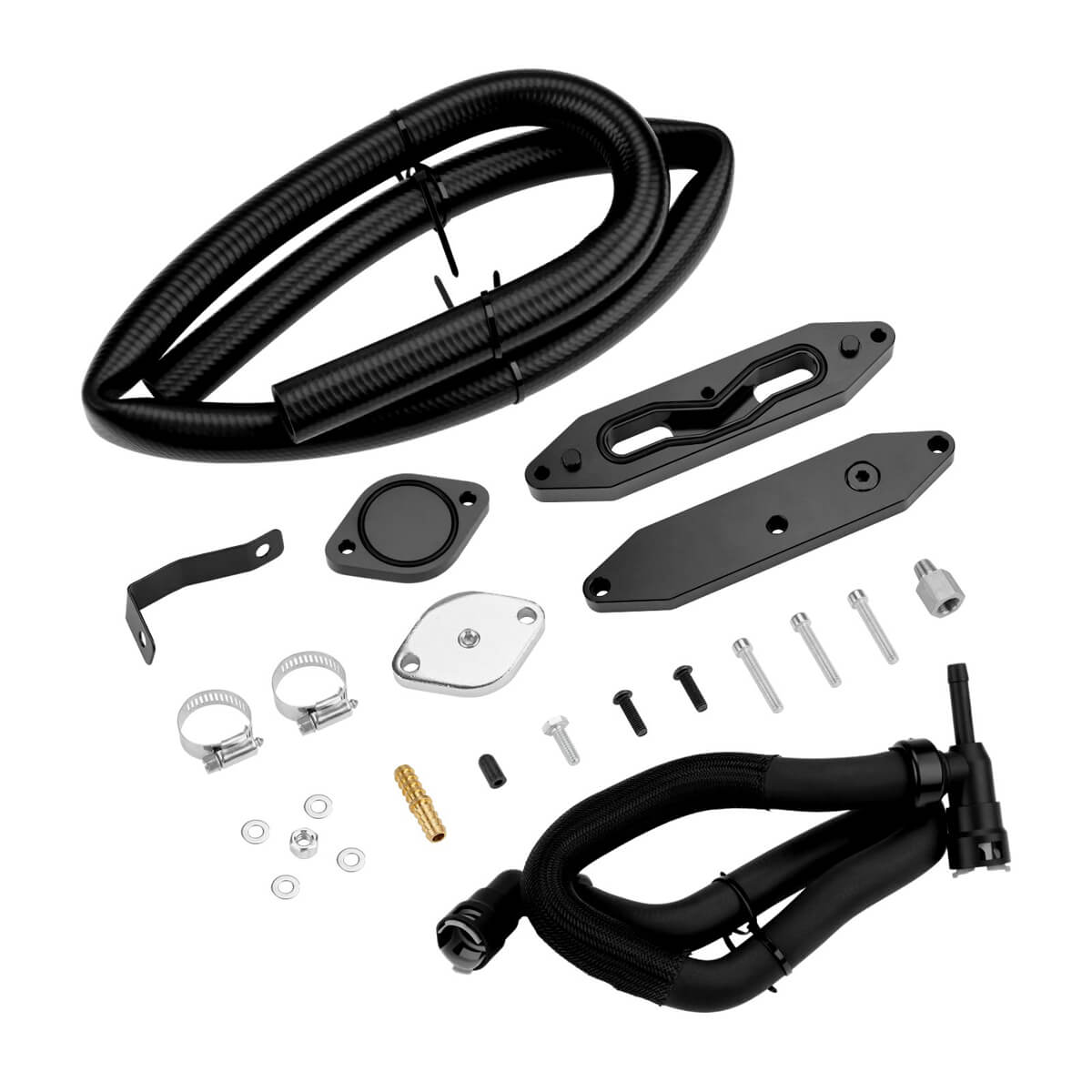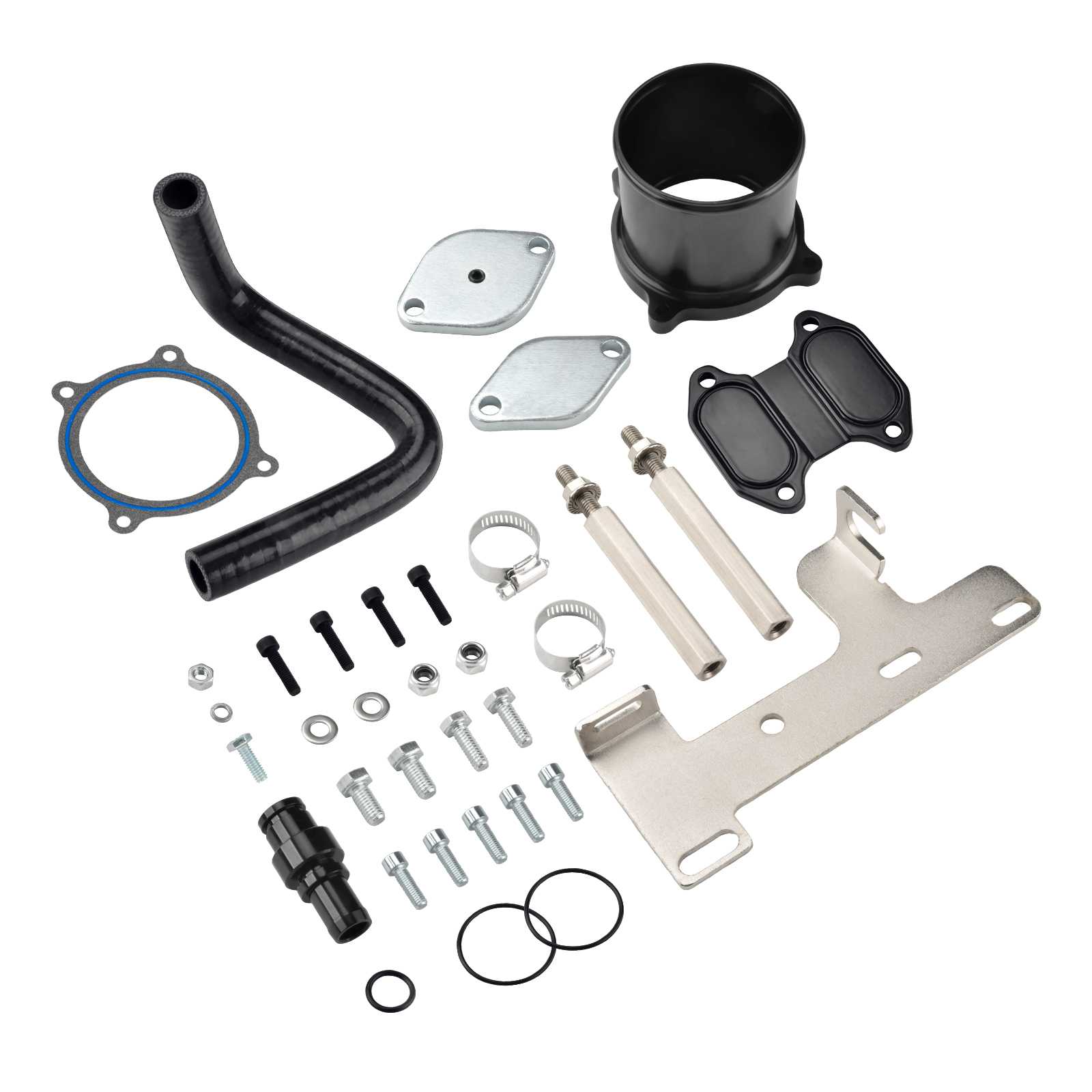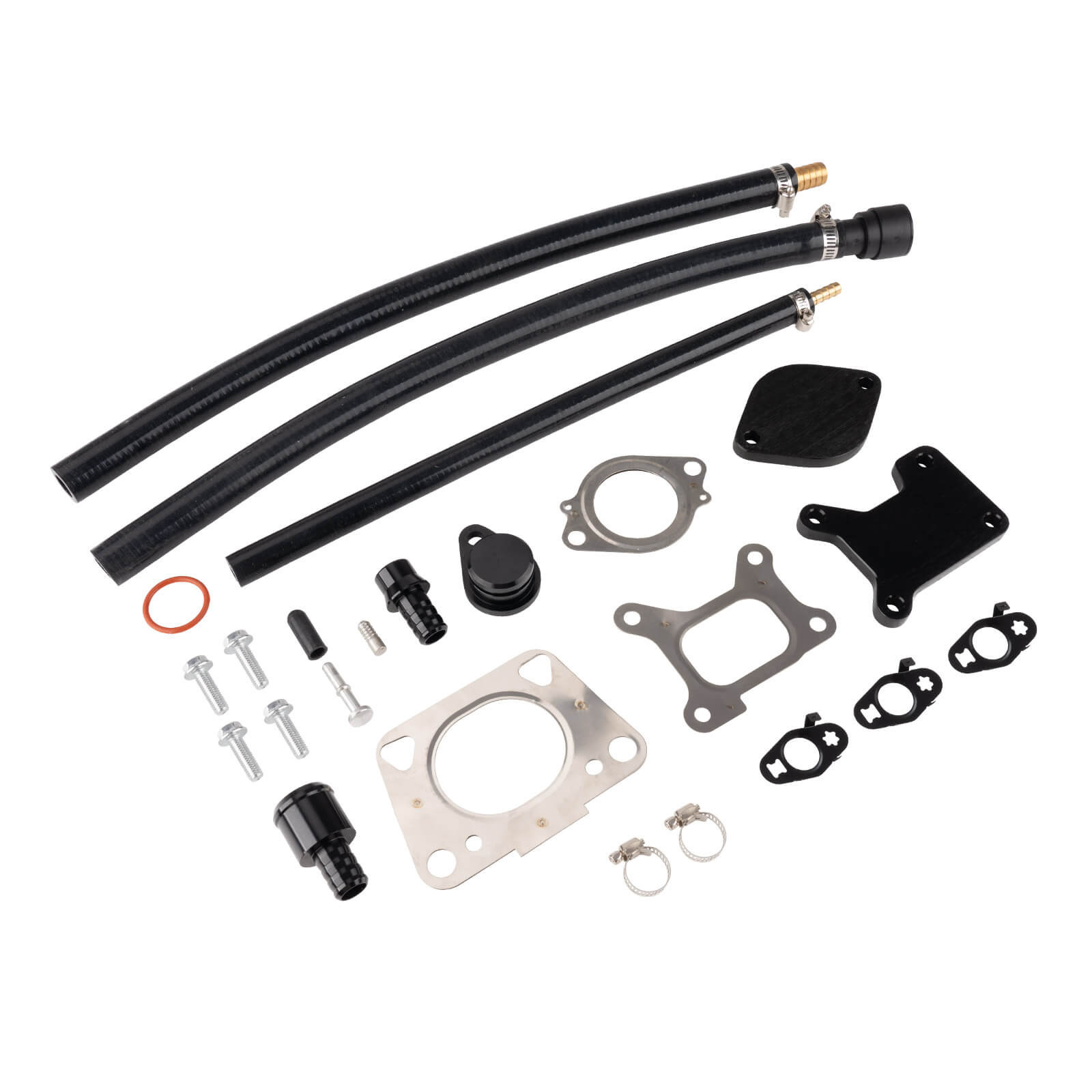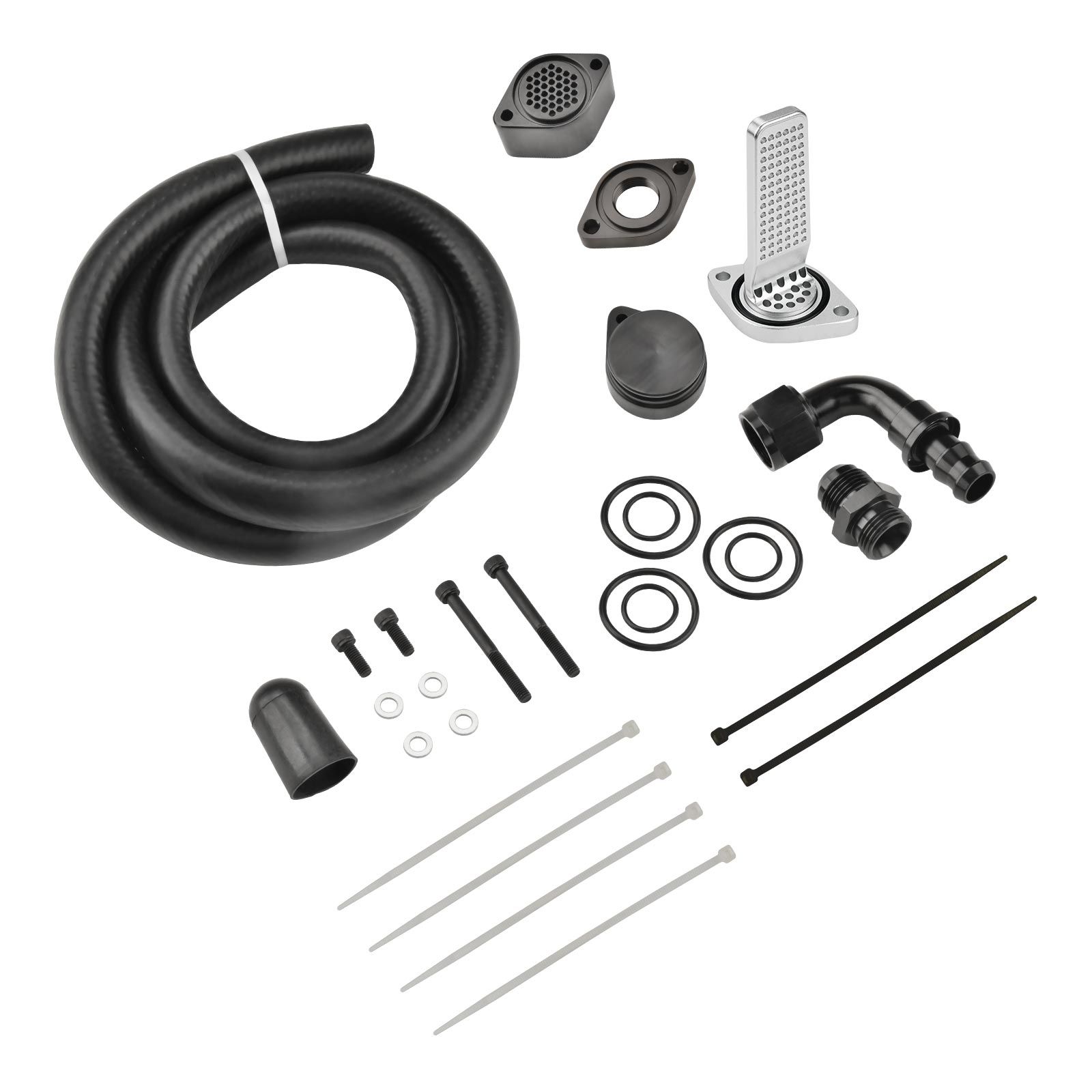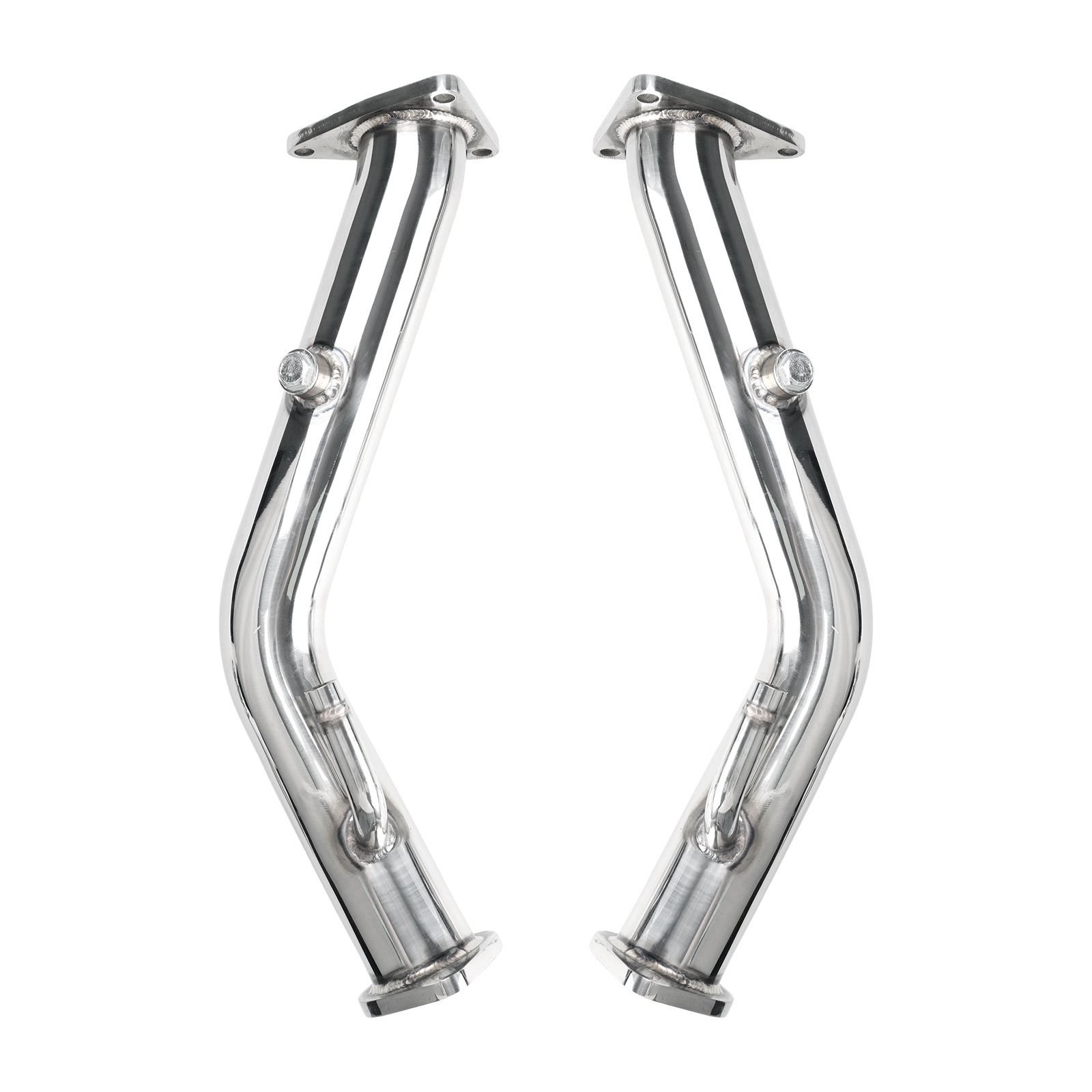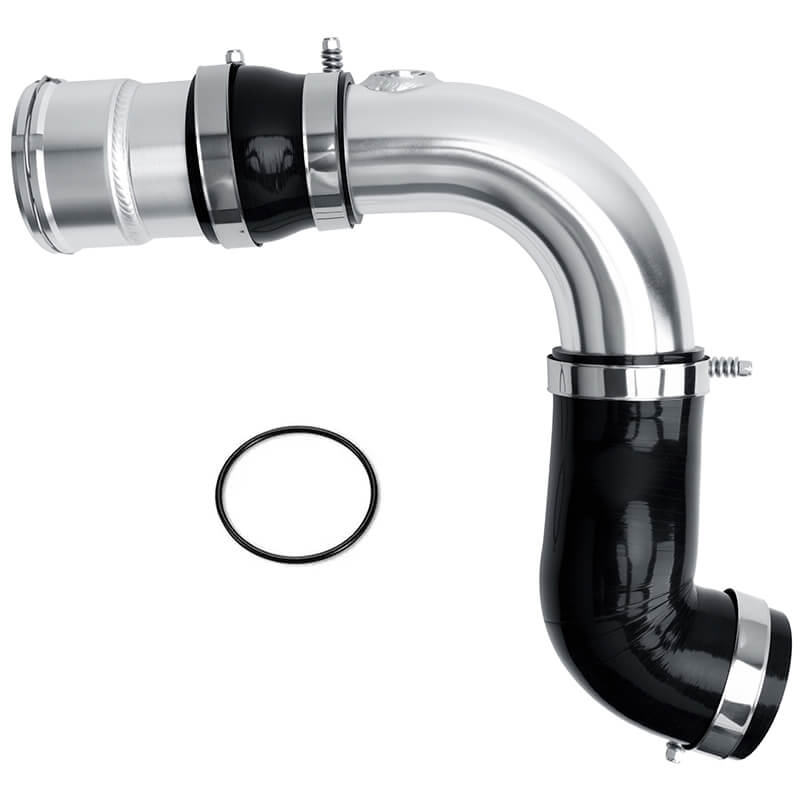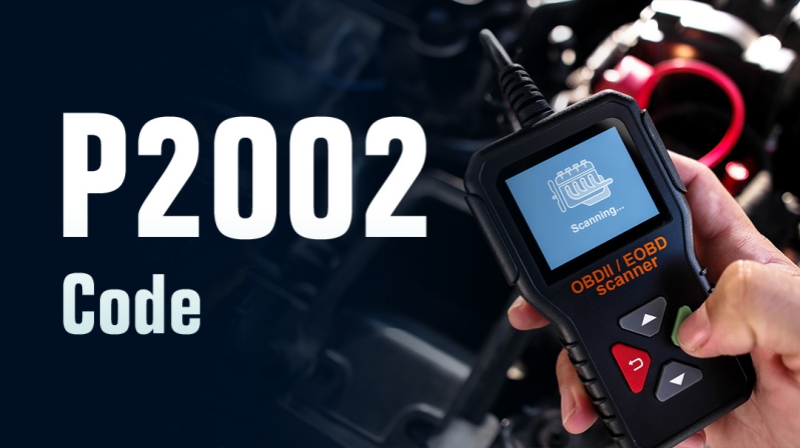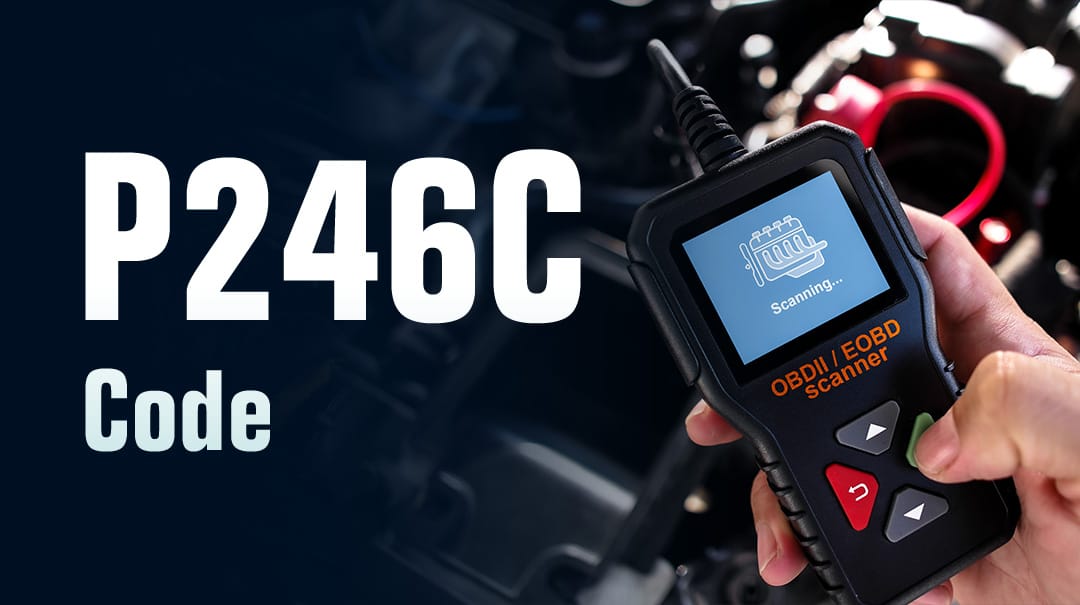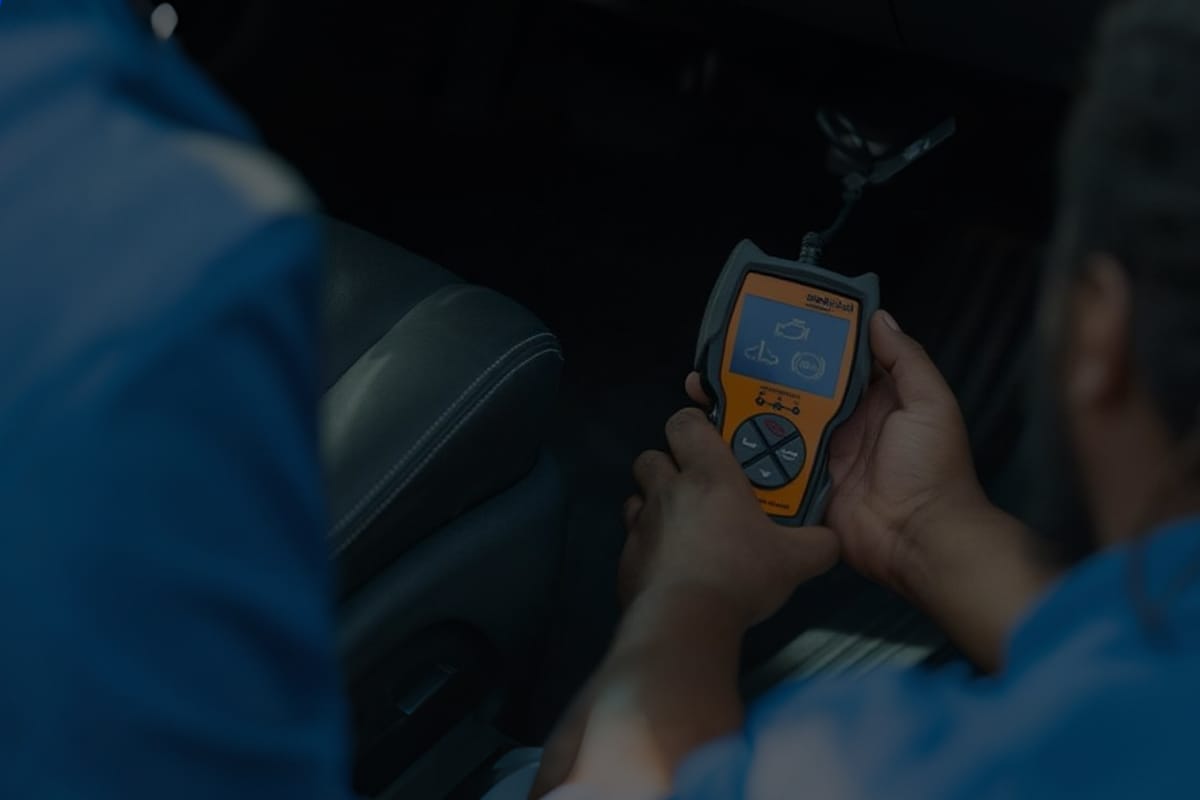On PistonHeads forum, a Maserati owner described an unsettling experience:
"The engine warning appeared as I entered town—now I'm seeing a code P244A. What's wrong with my car, and will driving do more harm?" (Source: PinstonHeads)
If you are also facing this issue, stop worrying, as you are definitely not alone. This complete guide is focused on the P244A code and aims to answer all the questions that are popping into your mind right now.
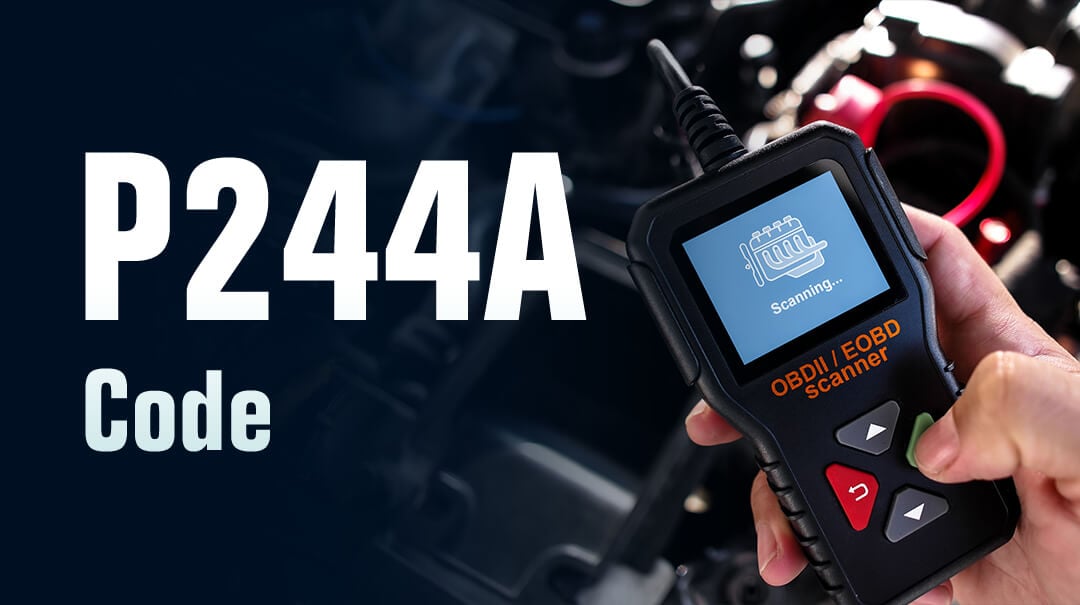
What Does P244A Mean?
The P244A code means Diesel Particulate Filter (DPF) Differential Pressure Too Low Bank 1 . In simple words, your vehicle's engine control module (ECM) is reporting that there's not enough pressure difference between the DPF's inlet and outlet, suggesting the filter's efficiency is compromised.
Therefore, it is directly related to the DPF system. The DPF is equipped with sensors that monitor the pressure before and after the filter. Sometimes debris, dirt, or soot can affect airflow, and the pressure sensor detects the problem. If these readings consistently fall below a specified threshold (sometimes repeatedly), the ECM transmits this information. The ECM stores the P244A code and, in many cases, triggers the check engine light.
Common Symptoms of P244A code
The most common symptoms of P244A include limp mode, check engine light, poor fuel economy, and DPF warning messages. You can use these symptoms to circle down the issue.
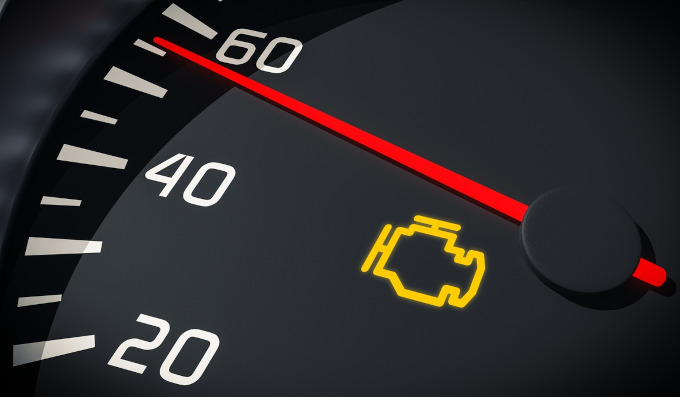
- The check engine light (CEL) is almost always the first warning. However, there could be many other reasons behind this light being on all the time. So, do not rely on this to confirm your vehicle has an issue.
- Loss of engine power is another major symptom. A sudden limp mode when accelerating usually confirms that there is something wrong with your vehicle. If you are facing this issue, it is likely related to the OBD-II Code P244A.
- If you are seeing "Clean exhaust filter" or DPF-related dashboard warnings, it is a P244A situation.
- Your vehicle may also start losing mileage as a symptom of this problem.
- Difficulty revving beyond specific RPM thresholds, commonly 3000 RPM. (Source: mercedesclub)
Possible Causes of P244A
P244A is mainly caused by soot buildup in the DPF, leaking exhaust pipes, or a failing DPF pressure sensor. The complexity increases because each of them affects the pressure sensor and DPF functions.
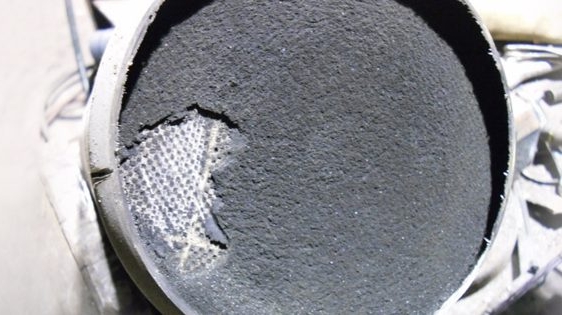
✅Blocked DPF: It happens when soot accumulates inside the filter. It affects the airflow.
✅Faulty Differential Pressure Sensor: If the sensor is not working properly, it will send incorrect data to the ECM, and readings will be off.
✅Exhaust Leaks: Any cracks, holes, or loose connections upstream of the DPF can create an artificial drop in pressure, confusing the sensor.
✅Disconnected Sensor Hoses: If they are not connected properly or have cracks in them, it can lead to incorrect readings.
✅Incomplete Regeneration Cycles: Excessive short trips or stop/start driving patterns prevent the DPF from reaching proper temperatures to self-clean, allowing soot to accumulate.
✅Software Errors: On rare occasions, outdated ECM software may misinterpret sensor inputs and trigger P244A erroneously.
Each cause disrupts the intended flow through the DPF, either by mechanical blockage, electronic failure, or inaccurate measurements.
How to Diagnose P244A
The best way to avoid causing any significant damage to your vehicle is by diagnosing this issue earlier and solving the error with the right repair solutions for P244A.
To diagnose, you will need the following tools:
- Multimeter
- Manometer
- Smoke tester
- Basic hand tools
Step-by-Step Process:
Step 1: Scan for Codes
Use your OBD-II scanner to diagnose all the codes. Note the P244A or any related code showing up on the scanner.
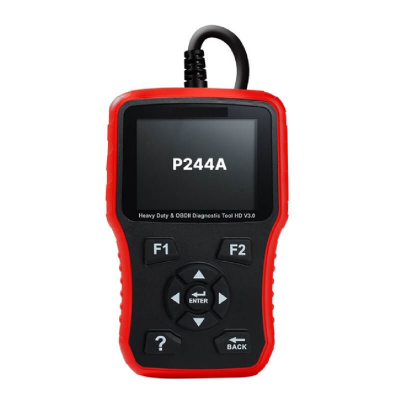
Step 2: Visual Checks
Visually check the exhaust system. Look out for DPF and pressure sensors for any visible leaks or damage.
Step 3: Inspect the Sensor and Hoses
Make sure hoses are properly connected and sensor terminals are clean and undamaged.
Step 4: Perform Electrical Tests
Use a multimeter to verify sensor voltage and resistance values (refer to your factory manual for specs).
Step 5: Monitor Live Data
Use the scanner to check how the readings change when you accelerate the vehicle.
Step 6: Manual Pressure Test
For persistent or unclear results, disconnect hoses and directly measure pressure across the filter during engine operation.
Step 7: Attempt Forced DPF Regeneration:
Trigger a forced DPF regeneration if possible. If pressure remains too low, you will need to get expert help.
While basic scanning is a do-it-yourself (DIY) job, deeper sensor tests, forced regenerations, and complex repairs are best handled by professionals. We recommend taking your vehicle to an expert, especially if you own a luxury car.
Repair Solutions for P244A
Repairs are usually prioritized from simple to major, focusing on the most common and least expensive fixes first:
Fix exhaust leaks: Even minor leaks near the sensor must be sealed, as they can disrupt sensor readings and trigger warning lights.
Replace the pressure sensor: If the diagnosis confirms that the issue is caused by a sensor, simply replace the faulty sensor.
Clean or flush the DPF: Get cleaning kits and clean the DPF. Sometimes, a deep cleaning can solve the issue.
Perform forced regeneration: Advanced scan tools can provoke a high-temperature burn-off cycle that eliminates excess particulates from the filter.
Update ECM software: If technical service bulletins recommend, a software update might resolve sensor misinterpretations.
DPF replacement: Only considered when cleaning or regeneration attempts fail and the filter is irreparably blocked or damaged.
Remove the DPF : After using the DPF removal kit, the system no longer relies on the DPF to manage pressure. Therefore, it can resolve the P244A fault code. In most cases, you will also experience additional benefits such as better fuel economy, smoother performance, and more.
Vehicles Commonly Affected by P244A
Modern diesel vehicles using diesel particulate filters (DPF) and differential pressure sensors are frequently impacted by the P244A code, especially those involved in urban or mixed driving cycles. Below is a summary of the most reported makes and issues:
| Make/Model | Common Issues / Tips | Years |
| Mercedes P244A code (C220/C250 CDI) | Sensor circuit faults, limp mode | 2009–2015 |
| Ford P244A code (Super Duty Diesel) | MIL lamp, sensor failures, DPF faults | 2016–2021 |
| Jaguar X-Type Diesel | Blocked DPF due to frequent short trips | 2007–2012 |
| Maserati P244A code (Ghibli Diesel) | Pressure issues after city driving | 2014–2022 |
| Land Rover Range Rover Evoque | Sensor faults, cleaning fixes | 2012–2020 |
| BMW 3-Series Diesel | Frequent DPF faults, cleaning needed | 2007–2015 |
| Volkswagen Passat/Transporter | Pressure sensor hose problems | 2012–2020 |
| Heavy-Duty Trucks | Sensor harness wear, persistent DPF faults | Various |
Repair Cost Estimate for P244A
| Repair Item | DIY Cost (USD) | Professional Cost (USD) Repair | Notes |
|---|---|---|---|
| OBD-II Code Reading | $0 – $75 | $80 – $150 | Code scanning and diagnosis |
| Sensor/Hose Replacement | $50 – $150 | $150 – $300 | Pressure sensor or hose repairs |
| Forced Regeneration | N/A | $100 – $300 | Typically dealer or shop performed |
| DPF Replacement | $800 – $2500 | $1000 – $4000 | Replacement only if cleaning fails |
| Exhaust Leak Repair | Varies | $150 – $500+ | Depends on location/severity |
| PCM/ECM Update/Repair | Rare, Varies | $500 – $1500+ | Dealer software or hardware fixes |
| Labor (per hour) | N/A | $100 – $200 | Varies widely by shop and region |
Do-It-Yourself (DIY) fixes, such as hose and sensor replacements, can help you save some money. However, if the problem persists, we recommend getting professional help.
Prevention Tips for P244A Code
To minimize the risk of future differential pressure faults:
- Always change the oil without any delays. Use the approved lubricants to prevent soot formation.
- Use premium diesel (and recommended fuel additives) to lower soot formation.
- Plan periodic long highway drives: Extended, steady-speed runs facilitate automatic DPF regeneration and prevent soot overload.
- Short trips can delay the DPF regeneration process. So, take some long trips occasionally.
- You can also remove the DPF system using a DPF delete kit. This can help completely eliminate issues related to the pressure differential, thus eliminating the P244A fault code. However, in many regions, this modification is only suitable for off-roading or racing. Be sure to check local emissions regulations before choosing this solution.
By addressing these maintenance steps, drivers greatly reduce the frequency of DPF warnings and maximize engine reliability.
FAQs about P244A
Conclusion
OBD code P244A is caused by an improper pressure difference caused by the DPF kit issues. It usually tracks back to the filter blockages, leaks, or sensor faults.
While it's not always a dangerous sign for your vehicle, attending to warning signs early can save costly repairs down the road.
We recommend that users always:
- Recognize symptoms and respond quickly to CELs
- Practice routine maintenance and periodic cleaning
- Make use of preventative products and professional diagnostics when needed
You can refer to this for future reference, and we recommend always consulting with a trusted technician if the issue persists.
Getting the genuine
DPF Delete Kits by Suncent can help you deal with this issue without compromising the quality of your vehicle.












